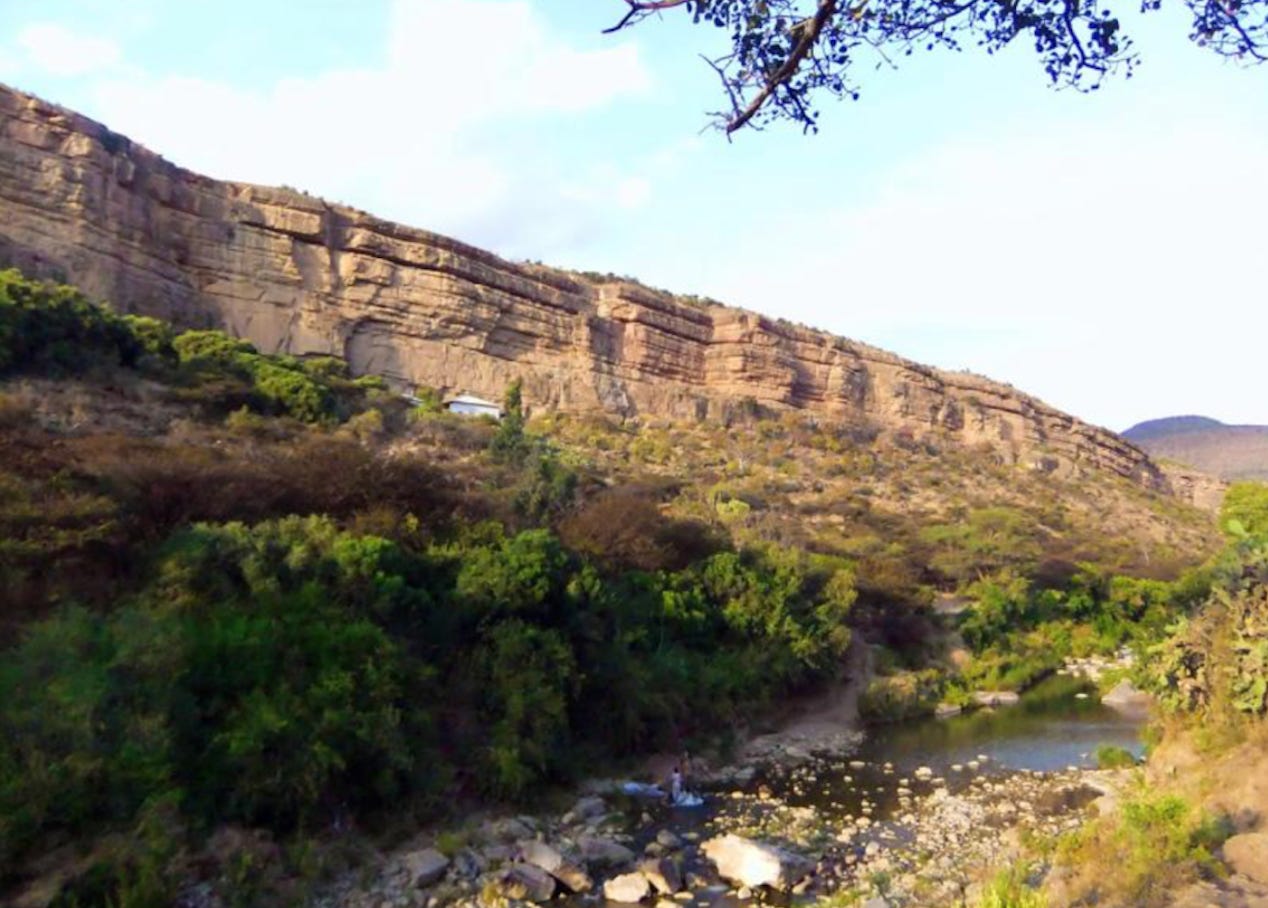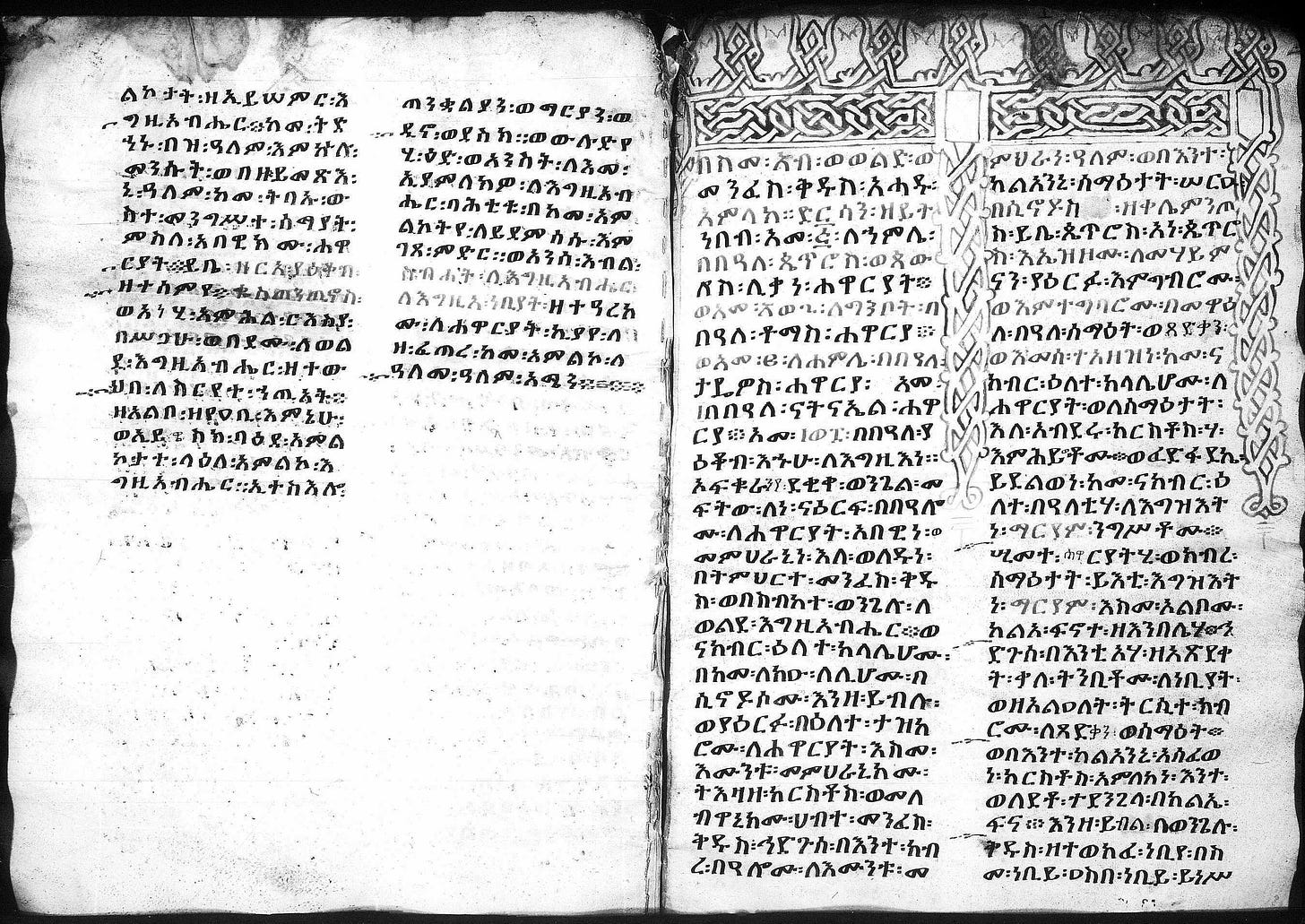Around 1265 AD on the Ethiopian Calendar, Saint Ewostatewos (Amharic, Ge’ez: ኤዎስጣቴዎስ ; birth name: Maeqabe Egzie / ማዕቃበ እግዚእ) was born in Ethiopia’s Tigray region.
St. Ewostatewos is considered “the father of all monks” in Eritrea, for they introduced monasticism into the region.1

Although some have claimed they were Armenian, Tigrayan, or of some other background, the saint’s own hagiography states they were born into a well-connected family of Amhara nobles.
Their father was the Amhara Saint Iyesus Krestos Moa / ኢየሱስ ክርስቶስ ሞዐ (literally: “Jesus Christ is Victorious”), born themself in Gondar of the Amhara region to Zekrestos / ዘክርስቶስ and Egzie Kebra / እግዚእ ክብራ .2

St. Ewostatewos’ mother was Sene Hiywet / ሥነ ሕይወት , sister of another Amhara Saint, Daniel, who also converted pagans in the Tigray region, particularly in Geralta.
St. Ewostatewos founded a highly influential religious movement centred around two Sabbaths—on Sunday and Saturday.
While their beliefs were consistent with Ethiopian Tewahedo traditions, they were frowned upon by Coptic authorities. To preserve the unity of the Church, the Amhara emperors cracked down on the growing movement.
Fearing persecution, Ewostatewos sent the supporters they had gained during their travels in the various Amhara provinces to Tigray and Eritrea, where they would conduct missionary work.
The saint themself entered into voluntary exile, making pilgrimages to Sudan, Egypt, and Jerusalem, before finally resting in Armenia around 1345.
It was not until the reign of the Amhara Emperor Dawit I that the practice of dual Sabbath gained widespread acceptance in Ethiopia. However, it was Dawit’s son, Emperor Zara Yaqob, who convinced the Copts to sanction the Biblical practice.
During their missionary work in Tigray, St. Ewostatewos established Debre Tserabi Monastery in the mountains of Eastern Tigray around 1300. Today, it is a popular Church that attracts both locals and tourists.
Two of their Amhara disciples are best remembered.
The first is St. Filipos, a second generation descendant of St. Ewostatewos. They established the Monastery of Debre Bizen in Eritrea around 1374. The name “Bizen” comes from the Amharic word for “balance” or “scale,” known as ሚዛን / “mizan.”
Various Amhara emperors ensured the survival of the monastery throughout the ages, granting it large tracts of land, manuscripts, priests, and more.
In the mid-19th century, the Amhara Emperor Tewodros II built the largest, most famous, and undeniably most beautiful Church at Debre Bizen. It is a circular structure with a central sanctuary.3
Ancient manuscripts composed by the Ewostatewosans are stored at Debre Bizen. They contain numerous textual cues that point to the Amhara identity of these holy men.
One example is the 15th century manuscript below, one of the oldest at the monastery. The Ge’ez word for “ten” is ዓሰርተ , but the author uses the Amharic ዓስር .
Another Amhara disciple, St. Absadi, was closest to St. Ewostatewos.
They founded the Monastery of Debre Mariam in Qohain of the Eritrea region. Like Debre Bizen, this one received generous donations from the Amhara Crown.
Most well known are several Ge’ez manuscripts written by Emperor Zara Yaqob and their saintly Amhara mentor, Yostinos, who sympathized with the Ewostatewosans and likely influenced the emperor’s decision to legalize their movement.
In the 17th century, the Amhara Emperor Fasilides built a Church at Debre Mariam. It is visited by thousands of Eritreans during the annual Feast of St. Mary, which falls on November 21 (EC).4
Though it has been suggested, to date, there is no evidence that St. Ewostatewos or any of their disciples spoke any language other than Amharic. Thus, there is virtually no chance they could have come from any community other than the Amhara.
While being Amhara is not a prerequisite for canonization, it is hardly a coincidence that most Ethiopian saints are of this heritage.
If anything, it is a testament to their status as the ancient Christians of Ethiopia.
Thanks for reading! If you appreciate my work, consider supporting me at any of the links below. Until next time,
-EM
Breton, Jean-François. (2009). “Monastères d’Érythrée,” p. 7.
See ገድለ ኢየሱስ ክርስቶስ ሞዐ for more.
Breton, “Monastères,” p. 27.
Ibid., p. 8.











Keep up the good work, brother. It would be great if all your X threads were available here.
What a shame that propaganda is being set here. Eritrea has the oldest church in Africa outside of Egypt, build by the first bishop of Aksum Abba Salama. This predates Ewostatewos by 1000 years... It's funny how the Amhara cultural group constantly utilizes Tigrayans and Eritreans as a qualifier for their non-existent history before the late middle ages